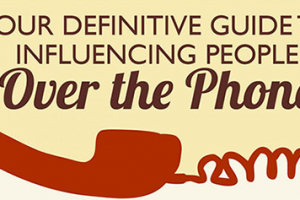Once upon a time… stories were something that began with once upon a time. They were mostly for children. Or for entertainment.
But then a few years ago, businesses began to cotton on to the power of stories.
Simon Sinek in his great TED talk How Great Leaders Inspire Action talked about how businesses that are adept at articulating their purpose – why they exist, what they believe in – appeal directly to the limbic part of our brain, which is the part that controls decision-making and behaviour. He cited Apple as an example, explaining that Apple doesn’t talk about its computers or try to convince us that they are good or have great features. Instead they talk about the fact that they believe in challenging the status quo and doing things differently. And, on this basis, people are happy to buy computers from them, phones from them, even watches from them because we share the same ethos.
Great leaders today need to be great storytellers. These are the leaders who inspire us to follow them because we want to not because we have to because there is a sign on their door that says Chief, Head or Director. These types of leaders inspire their staff to go the extra mile for them and organisations with this type of leadership ethos engender loyalty and commitment from their end users.
Whatever the nature of your business or organisation, telling stories will enable you to connect with end users in a way that appeals straight to the “feeling” part of the brain – the part that makes decisions. It will articulate your beliefs and values in a way that engenders greater connection and loyalty amongst staff and end users. And it will shift your narrative from the dry language of business to the richer language of common humanity and shared purpose.
I have helped some of the largest organisations in the UK to tell their stories and I believe there are a number of key components that make a truly great business story. This is my storytelling top 10:
Start with the message – what do you want people to take away from your story? Keep these aims and objectives in mind, although don’t allow them to dictate how you tell the story.
Stand in the reader’s shoes – what sort of things are important/interesting to them? What do they want to know about? A good business story balances what you want end users to know against what they want to know about – the things that interest and inspire them. Make sure you talk in their language and not yours.
Be honest – share your challenges and difficulties as well as your successes. Demonstrating how you overcame challenges is a great learning point for others. Tell them what lessons you learned. Being honest makes you appear authentic and accessible. Remember the Brene Brown TED talk about The Power of Vulnerability.
Set the context – tell readers about the problem or difficulty you were aiming to tackle at the outset. When they really understand the context, it makes what you did appear very much more powerful.
Include a call to action – before you tell your story, think about what action (if any) you want the reader to take after reading it. Do you want to inspire them to contact you to find out more about your work or becoming a partner? Or, would you like them to read more about what you do? Include details of how they can take action.
Book your free team marketing audit here.
Start at the end – when you’re telling a story you don’t have to tell it in chronological order. Often it can be better to start at the end (the amazing outcome) and work backwards (how we got there). Or, you may want to start by setting out what the problem was. If you have a really great quote, you might want to start your story with that. Mix it up a bit and vary it so your stories don’t appear formulaic.
Interest, inform, inspire – this is a good principle to bear in mind when you are writing anything but particularly a story. If it doesn’t have all of these components, people are unlikely to read it and even less likely to take the action you want them to take.
Finish with a flourish – some stories just stop and there is a frustrating lack of completion for the reader. A good way to end the story is to look forward to the future – what are you going to do next? How will you build on what you have already done? Or, you could refer back to the original problem/challenge and emphasis how much things have changed. It is often good to end on a positive note.
A picture is worth a thousand words – OK, this isn’t strictly true but it is good to have a picture to accompany your story, particularly if it is a genuine picture featuring the people who were involved, rather than a stock shot. Remember to caption the picture with people’s names.
Make it simple clear and professional – why are you telling the story? If you don’t know how can you expect your reader to know? Make sure your message is clear. Use simple, accessible language without being patronising. Check your spelling, grammar and, most importantly, make sure you spell people’s names correctly and give them the correct job title.
Most businesses and organisations have a wealth of wonderful untold stories.
Book your free team marketing audit here.
Uncovering this rich seam of gold can strengthen your organisation by illustrating the difference you make and showcasing your values and beliefs in action. Stories allow you to share best practice and inspire others through the work you are doing. On a practical level, they provide an important source of new content for websites, social media and trade or consumer articles.
In business, stories don’t start with Once Upon a Time but they can grip the imagination like the archetypal fairytales of old and you can convey a powerful message that will inspire readers in a way that plain old marketing copy can never hope to do.
Source: http://www.bmmagazine.co.uk

















Leave a Reply
Your email is safe with us.